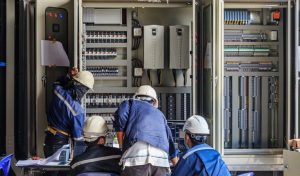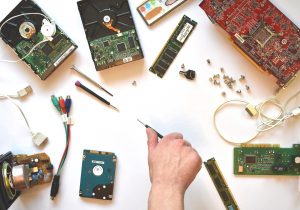

How do I choose from so many types of controllers?
With many controller choices, it is overwhelming to clearly understand the differences between whether PLC (Programmable logic controller), PAC (Programmable automation controller), or IPC (Industrial PC). All controllers above are suitable for automation applications. But to figure out the best fit, you need an overall evaluation regarding controller features, the environment you would like to apply, and the cost-benefit analysis. In this article, we would like to discuss the development of a control system, and the differences between these three categories.





The development of a control system
When automotive manufacturing began, PLC was used wildly for continuous process needs, such as assembly lines in electronic factories, food & beverage package, and pharmaceutical manufacturing. Previously, these tasks worked with relay racks. When you need to modify the automotive processes, you need to manually re-wire. It was time-consuming. The replacer-PLC solutions came, and the manufacturers started to implement them. It brought a significant decrease in manual modification cost and spaces saving.
Although PLCs have many advantages, and also are rugged and reliable for harsh environments. They are limited logic capacity because of a single microcontroller. PLCs can work well in small-scale automation tasks. However, when it comes to more complex automation, the quickest way to resolve is to combine multiple PLC systems. Or you may use a hybrid system- a system with PLCs and IPCs.
In the 90s, the development of IPCs seemed like it would take over the PLCs in automation applications. It actually took a while to improve their reliability in the beginning. Now IPCs have been the primary solution for industrial applications.
The most difference for IPCs is that the operating systems give them access to endless software tools and connectivity options. And with DIN-rail or rack mounting design, expands the application capability.
But IPCs didn’t really replace all automation applications. Because there came the next-generation PLC- PAC.
PACs have similar advantages- a hybrid system and no need to add additional hardware devices. They mount two or more microcontrollers and have a better logic system, including a variety of programming options (compliant with IEC 61131-3 standard). And they can also operate in multiple domains (motion or discrete). When the system is complex, PACs provide better integration with SCADA.
Which one is the best?
We had learned the basic functional features between these three categories. To decide on your automation solutions should also consider the cost and benefit analysis. When your application is about low-cost, simple programming methods and easy to maintain, PCLs are your first choice. If you have the budget for specific programming, and your application is complex, like multi-axis motion, PACs would be a better choice. Moreover, for a more complex automation project, like high analog I/O requirements, you may consider IPC solutions for process control applications.






Let's get more info on Smart Manufacturing
Get to know more about IPC news, join our






